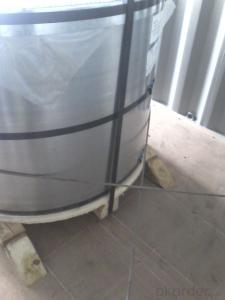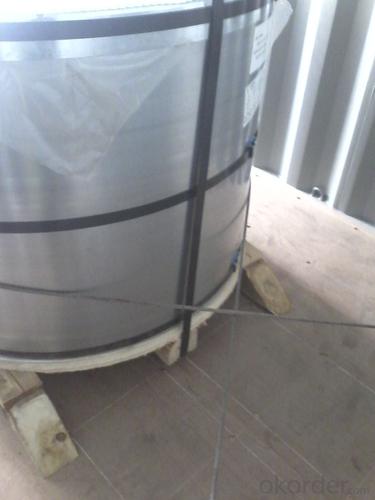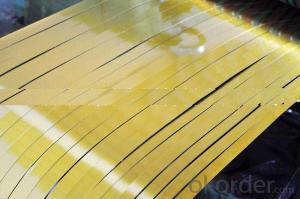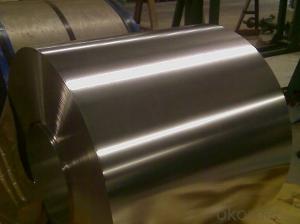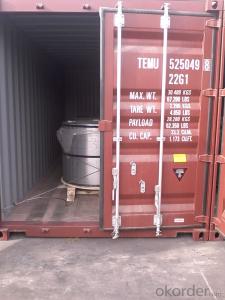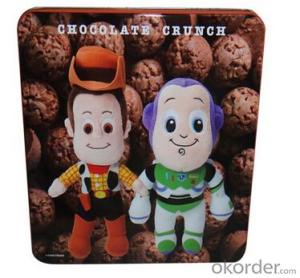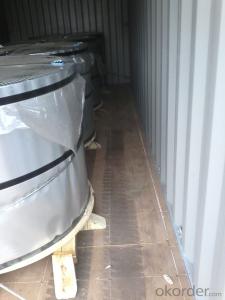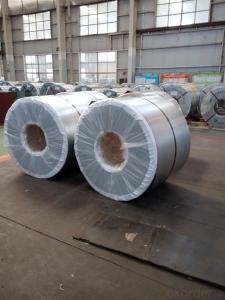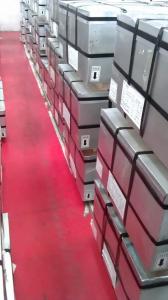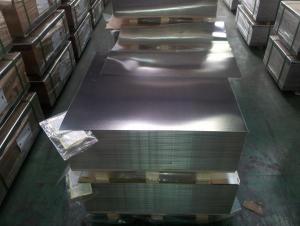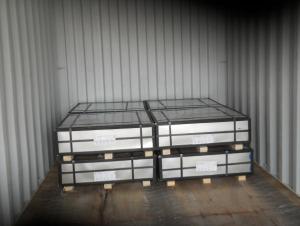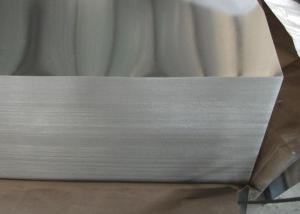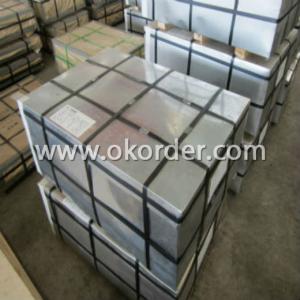Prime Good Quality ETP Tinplate for Cookie Cans
- Loading Port:
- China Main Port
- Payment Terms:
- TT OR LC
- Min Order Qty:
- -
- Supply Capability:
- -
OKorder Service Pledge
OKorder Financial Service
You Might Also Like
We have been producing tinplate material professionally and providing related service for decades years. Now we have been exporting our material to the world. Please kindly contact us to meet your needs for ETP materail.
Below is the specification we currently do:
1. Standard: GB/T 2520-2000, JIS G3303-2002 and DIN EN 10203-1991
2. Raw material: MR, SPCC
3.Thickness: 0.18 to 0.50mm
4. Width: 260 to 980mm
5. Coil diameter: ID 420mm or 508mm
6. Temper grade: T2, T3 and T4
7. Tin coating: ordinary 2.8 or 2.8g and 5.6g or 5.6g, can produce according to customer's requests
8. Applications: paint, chemical and other usage can make battery, electric cable and other industries
9. Package: anti-rust paper, corner protected. Sheets or coils according customer's request.
Both Prime and Second Quality Are Available!!!
Standard for Temper:
code | Chinese Stardard | Japaness Standard | American Standard | European Standard | International Standard |
| GB/T 2520-2000 | JIS G3303-2002 | ASTM A623M-2002 | DIN EN 10203-1991 | ISO 11949-1995 |
T-2 | TH52+SE | T-2 | T-2(53) | T52 | TH52+SE |
T-2.5 | TH55+SE | T-2.5 |
|
| TH55+SE |
T-3 | TH57+SE | T-3 | T-3(T57) | T57 | TH57+SE |
T-3.5 |
|
|
|
|
|
T-4 | TH61+SE | T-4 | T-4(T61) | T61 | TH61+SE |
Surface of tinplate:
Marks | Surface state | Characteristics |
B | Bright rough | Glazed surface obtained after melting treatment of electrotinned smooth raw material strip featuring certain oriented rubstone figure. |
R | Stone rough | Glazed surface obtained after melting treatment of electrotinned raw material strip featuring certain oriented rubstone figure. |
S | Silver rough | Glazed surface obtained after melting treatment of electrotinned raw material strip with rough matt surface. |
- Q: How does tinplate contribute to the presentation of jewelry?
- Tinplate is often used in the packaging of jewelry, such as boxes or containers, which enhances the presentation and adds an element of luxury. Its glossy and reflective surface provides a visually appealing backdrop for showcasing the beauty and intricacy of the jewelry inside. Additionally, tinplate offers excellent protection against corrosion and moisture, ensuring the longevity and preservation of the jewelry.
- Q: What are the main applications of tinplate in the chemical industry?
- Tinplate is widely used in the chemical industry for various applications such as packaging, storage, and transportation of chemicals. Its corrosion resistance properties make it an ideal choice for containers, cans, and drums used to store chemicals. Tinplate also provides a barrier against moisture and oxygen, which helps in preserving the quality and integrity of chemical products. Additionally, tinplate is used for the production of aerosol cans, chemical spray bottles, and other packaging solutions, ensuring safe and efficient handling of chemicals in the industry.
- Q: How is tinplate different from aluminum packaging?
- Tinplate is different from aluminum packaging in terms of material composition and properties. Tinplate is made of steel coated with a thin layer of tin, which provides corrosion resistance and enhances the durability of the packaging. On the other hand, aluminum packaging is made entirely of aluminum, offering lightweight and excellent thermal conductivity. Additionally, tinplate is more cost-effective and commonly used for canned food and beverage packaging, while aluminum packaging is preferred for its recyclability and use in various industries, including food, pharmaceuticals, and cosmetics.
- Q: Can tinplate be used for marine applications?
- Yes, tinplate can be used for marine applications. Tinplate is known for its excellent corrosion resistance, making it a suitable material for marine environments where exposure to saltwater and moisture is a concern. Additionally, tinplate's strength and durability make it ideal for various marine applications such as packaging, containers, and components for boats and ships.
- Q: What is the use of tinplate printing tin, storage of food safety
- Tinplate was first imported into China from abroad. It is a kind of iron with better quality and is made of extremely thin iron sheet
- Q: How can tinplate be identified?
- Mainly to see whether the surface is smooth, whether there are holes in the surface, there are no wave edges, scratches, tin is enough, the size is not in tolerance Wai?. Wait a lot. Specific problems are analyzed in detail, and there are many aspects of assessing quality problems, and so on.
- Q: What about tin cans?
- Galvanized iron: galvanized iron for daily use, such as box, water pipe, etc.Tin: tin plated iron. Usually used for food packaging. Such as canned goods
- Q: Can tinplate be used for outdoor applications?
- Yes, tinplate can be used for outdoor applications. Tinplate is a durable material that is resistant to rust and corrosion, making it suitable for outdoor use. Additionally, its ability to withstand harsh weather conditions, such as rain and sunlight, further supports its suitability for outdoor applications.
- Q: What's the head iron?
- Tin plate (commonly known as tinplate) refers to the surface coated with a thin layer of metal tin steel plate. The corrosion resistance of SPTE is poor, the general condition of 24H will appear rust smoke test.
- Q: What are the different ways to stack tinplate cans?
- There are several different ways to stack tinplate cans, including the straight stack, pyramid stack, interlocking stack, and the crisscross stack. Each method offers its own advantages and considerations in terms of stability, space efficiency, and ease of access.
Send your message to us
Prime Good Quality ETP Tinplate for Cookie Cans
- Loading Port:
- China Main Port
- Payment Terms:
- TT OR LC
- Min Order Qty:
- -
- Supply Capability:
- -
OKorder Service Pledge
OKorder Financial Service
Similar products
Hot products
Hot Searches
Related keywords
